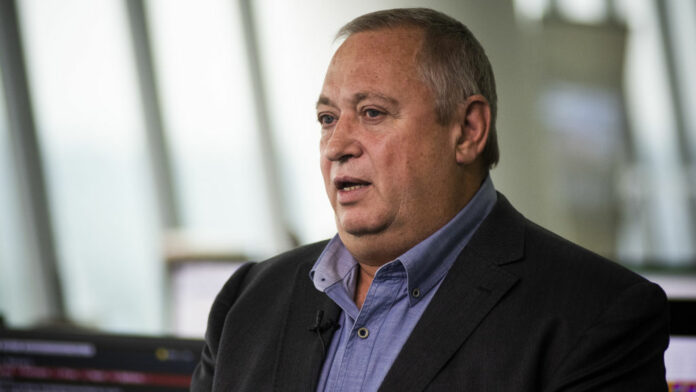
IF platinum group metal (PGM) prices stay at their current levels this year, one bleak forecast says, Sibanye-Stillwater will break its lender covenants. To keep them afloat it would then be confronted with a decision to either close its projects or raise $500m to $1bn, possibly through a rights offer, the argument goes.
Before you reach for the Valium, however, it’s worth recalling recent history — because this is not the first time the company has been tipped for oblivion.
It passed the dividend in 2017 to cope with net debt of R22bn. The market didn’t approve. Critics accused Sibanye-Stillwater CEO Neal Froneman of wrecking the company’s balance sheet by overspending after buying assets worth 1.6 million ounces in annual PGM production in less than three years.
Despite the market opprobrium, Sibanye-Stillwater went on to announce two more transactions, buying DRDGold and Lonmin a year later, and funded six more between 2020 and 2023. This included greenfields projects in lithium, a battery metal, in Finland and the US. The most recent transaction — the purchase of US metals recycler Reldan Group in November last year for $155m — was financed with a five-year convertible bond worth $500m. Cue more market outrage.
Why dip a convertible bond for growth when PGM price declines were putting the firm’s cash flow under pressure, asked the company’s critics.
You’ve got to assume we’ve done nothing. That’s like driving into a brick wall at 100 miles an hour
According to one forecast, Sibanye-Stillwater could register potential negative cash flow of R6.8bn in 2023. The actual number will become plain when the firm unveils its full-year results next Tuesday (on March 5).
Froneman brushes off the criticism. “You’ve got to assume we’ve done nothing. That’s like driving into a brick wall at 100 miles an hour,” he says of the estimate on negative cash flow. What he’s likely to confirm is up to a 60,000 oz/year cut in South African PGM production, and the suspension of US-based mine Stillwater’s expansion. Both measures are aimed at containing costs and stemming any cash leakage. But the final dividend may be passed.
Baked in growth
Yet growth remains high on the agenda. Insofar as mergers & acquisitions (M&A) can be a corporate culture, Sibanye-Stillwater has adopted it. But Froneman says the market is at a point in the cycle when assets should be bought; when, for instance, lithium prices are low and project developers have run out of money.
He also thinks that PGM price corrections have bottomed out. “The current commodity prices are low, and we can’t ignore them being low,” he says. “We have to be more careful with our M&A, but I don’t sit here believing low prices are here to stay. It’s not a live-in-hope-and-die-in-despair [scenario]. I believe the fundamentals for PGMs are actually good, and those trends are starting to improve.”
Broadly speaking, analysts expect a modest metal price recovery this year at the very least. “We forecast all three major PGMs to be in deficit in 2024, with implied PGM inventories falling below 2020 levels, when there was significant supply anxiety,” says UBS analyst Steve Friedman. Demand for vehicles may trough, however, and limit the potential upside for PGM prices.
As for Sibanye-Stillwater, analysts say investors need to have their eyes wide open. “The company is likely to pursue further deals, which may afford the opportunity to raise funding,” says SBG Securities analyst Adrian Hammond. “Holders of the stock need to be on board with such a scenario,” he says.
I don’t sit here believing low prices are here to stay. It’s not a live-in-hope-and-die-in-despair [scenario]. I believe the fundamentals for PGMs are actually good, and those trends are starting to improve
Nedbank Securities analyst Arnold van Graan concludes that Sibanye-Stillwater shareholders simply have to accept the realities of the management style, which is orientated towards growth by acquisition, and should then trust it can reposition existing assets in a cyclical downturn.
But Van Graan has downgraded Sibanye-Stillwater to underweight until there’s an operational turnaround and a clear sign of the future free cash flow potential of the miner’s battery metal assets. “Unfortunately, we do not expect this to happen in the short term,” he says. “We do note that Sibanye is highly leveraged to PGM prices and that a sharp and sustained surge in the PGM basket price could bring a [strong] increase to the company’s valuation.”
Froneman says that in hindsight he’s sorry not to have done the convertible bond a year earlier, when the firm’s share price was higher. What it has achieved, however, is to protect the balance sheet while he hunts discount deals. There’s nothing immediately in the works, but the strategy is unchanged. “Now is the time when you’re going to find value-accretive opportunities.”
Counterweight to China
One thing he won’t do, however, is close the Stillwater mine. The operation is heavily geared to palladium, the price of which fell about 40% last year. The mine was twice restructured in 2023 and another restructuring is possible this year.
But it would be foolish to close the mine at a time when the company is hoping to build another in the country, the Rhyolite Ridge lithium/boron project in Nevada, with the help of subsidies granted in terms of US President Joe Biden’s Inflation Reduction Act.
“It’s strategic,” says Froneman. “Can you see now why I say we’re not going to close the mine? We can’t … well, we can, but that’s not the big picture for us or the US.”
Sibanye-Stillwater’s foray into PGMs was based partly on basic fundamentals of supply and demand. The battery minerals strategy is similarly positioned for outsized supply deficits, but there’s also a geopolitical aspect to the strategy. Froneman hopes Sibanye-Stillwater can be a partner for Western democracies to help balance the threat of China’s dominance in certain minerals.
The Keliber project, which is one of the strains on Sibanye-Stillwater’s balance sheet, is due to produce first metal in 2025, so will exclusively supply — at a premium — the European battery metals pipeline. “Governments will have to secure [low-carbon lithium supply] on their own, because private enterprise can’t do it,” Froneman says. “It’s got to be done in partnership with government. We’ve been flying that flag now for a couple of years, and that’s why we’ve chosen those ecosystems of North America and Europe.”
A version of this article first appeared in the Financial Mail.









